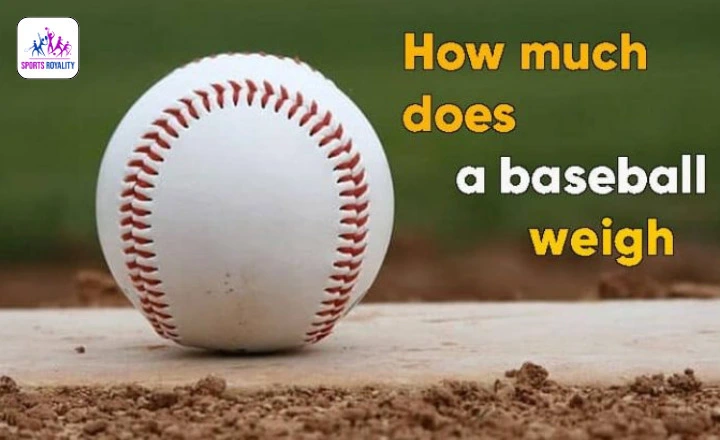Have you ever wondered just how much does a baseball weigh? It seems like such a simple question, yet the answer may surprise you. While it might be easy to assume that all baseballs weigh the same, there are actually specific regulations in place to ensure consistency and fairness in the sport.
From the professional leagues down to little league games, every baseball used must meet certain weight requirements. In this article, we will delve into the world of baseball weights and explore why something as seemingly insignificant as a few ounces can make all the difference on the field.
Did Baseball Weigh the Same All Time?
Baseball, the quintessential American pastime, has evolved over the years. It is not just the rules or strategies that have changed; even the equipment has undergone significant modifications. One aspect of baseball that often goes unnoticed is the weight of the ball used in different eras. Baseballs were not always standardized in terms of weight. While it may seem surprising at first, an examination into this aspect reveals a fascinating aspect of baseball’s history.
Dead Ball Era Baseballs

During the Dead Ball Era (1901-1919), baseballs were noticeably different from their modern counterparts. These early baseballs were larger and heavier, weighing around 5 ounces compared to today’s standard weight of 5.25 to 5.75 ounces. The intention behind this difference was to reduce the likelihood of home runs and ensure a more strategic game focused on fielding and base running.
It is important to acknowledge that even within a given era; there can be variations in baseball weights due to manufacturer differences and quality control issues. This means that not all baseballs during the Dead Ball Era weighed exactly 5 ounces some could have been slightly lighter or heavier. Such variations also existed in subsequent eras as technology and manufacturing processes improved.
Live Ball Era starting
The Live Ball Era, which began in the 1920s, marked a significant change in the game of baseball. With advancements in equipment and a growing emphasis on offense, there is evidence to suggest that the weight of the baseball has evolved over time. During this era, rules were put in place to regulate the weight and characteristics of the ball. Some argue that there may have been inconsistencies throughout history.
One intriguing aspect to consider is how changes in ball manufacturing techniques might have affected its weight. In earlier years, balls were handcrafted with natural materials like leather and wool yarn tightly wound together. This process was certainly prone to human variation and could lead to slight differences in weight from one ball to another. Today’s balls are machine-made using synthetic materials such as rubberized cork centres with layers of yarn and cowhide covering, ensuring greater uniformity.
World War II Era
During the World War II era, baseball had to make several adjustments due to many players enlisting in the military. One of these adjustments was altering the weight of the baseballs used during games. It is well known that from 1872 until around 1941, a standard baseball weighed between 5 and 5.25 ounces, but during the war years, this weight was reduced to conserve materials.
The lighter baseball created controversy among players and fans alike.
Some argued that it changed the dynamics of the game, affecting pitching strategy and hitting power. The lower weight made it easier for pitchers to throw breaking balls and curveballs with greater precision, while batters found it more challenging to hit home runs or deep shots into the outfield.
As veterans returned from their service and player rosters stabilized again after the war, there were debates over whether to revert back to using heavier balls or continue with lighter ones. By Major League Baseball’s decision in 1949, they decided on compromising settling for a ball weighing exactly five ounces. This compromise aimed at accommodating both pitchers and hitters by maintaining some of the advantages gathered over those years while avoiding overly dramatic changes in game play.
Modern Baseball – The Era with the Proper Baseball Weight
In the modern baseball era, there has been a long-standing debate about whether the weight of baseballs has remained consistent over time. While it may seem like a trivial matter, it holds great significance for players and fans alike. A closer examination reveals some intriguing insights into this topic.
One argument suggests that the weight of baseballs has not changed significantly throughout history. Proponents of this view argue that maintaining a standard weight ensures fair play and consistency in the game. Recent studies indicate that there may have been subtle variations in ball weight over time due to manufacturing techniques and materials used. This brings up questions about how these variations may have affected gameplay and performance, adding another layer to an already complex issue.
Another perspective explores the technological advancements in equipment manufacturing that could have influenced ball weights. Manufacturers are constantly seeking ways to improve balls’ aerodynamics and performance by altering their construction and design features. With these innovations, it is plausible to assume that modern-day baseballs might differ slightly from their earlier counterparts’ weights.
How Much Do the Average Baseball Weigh?
Baseball, a beloved sport across the globe, is played with much zeal and passion. Have you ever wondered how much these iconic spheres actually weigh? On average weighs of baseball around 5 to 5 and one-fourth ounces, or approximately 142 to 149 grams. This seemingly trivial detail may not cross the minds of many fans as they cheer for their favourite teams or players, but it serves as a crucial aspect in determining the game’s dynamics.
The weight of a baseball can significantly impacts its flight trajectory when thrown by pitchers or launched from a bat. A lighter ball tends to travel faster through the air due to reduced drag while exerting less force on contact. A heavier ball offers more resistance against air resistance and results in slower speeds during pitching or hitting. These nuances influence pitch movement and batter reaction time factors that play decisive roles in determining outcomes on the field.
Tweaking the weight of baseballs has been an ongoing debate among sports enthusiasts seeking fairness in game play. Some argue that altering the weight can lead to greater excitement and increased scoring opportunities through enhanced hits and longer home runs.
Any alteration bears consequences that go beyond player performance; it would also require adjustments in equipment design and affect traditional aspects of strategy within the sport.
Different Weight Of baseballs- How Much Does a Baseball Weigh

When it comes to baseball, many people may not realize that there are actually different weights of baseballs used in the game. Here we discussed ordinary and rubber baseball weight:
Ordinary Baseball Weight
Every baseball fan knows and appreciates the feel of an ordinary baseball when it hits their glove or bat. The weight of a Major League Baseball (MLB) ball is crucial for ensuring fair play and giving players the ability to showcase their skills. The standard weight for an MLB baseball is between 5 ounces (142 grams) and 5.25 ounces (149 grams). This slight difference may seem negligible, but it can affect the trajectory, pitch speed, and overall gameplay.
Rubber Baseball Weight
The standard weight for a rubber baseball is around 5 ounces, but did you know that there are variations in weight? Different weights can have significant impacts on gameplay and even player performance.
A lighter baseball can make pitching faster and more challenging for hitters. With less weight to throw, pitchers can generate greater velocity on their pitches, making them harder for batters to hit. Heavier baseballs may slow down pitches slightly but increase control and movement. This variation in weight gives pitchers an opportunity to add spin or break on their throws while maintaining steady control over accuracy.
Soft Baseball Weight

Softball enthusiasts often debate the benefits of using different weighted balls in their training routines. The softer variants range from 6 ounces to 10 ounces, each offering unique advantages for skill development.
The lighter softballs, weighing around 6 to 8 ounces, are ideal for beginners and players looking to improve their hand-eye coordination. These balls allow for increased accuracy and control during practice sessions. They also help in building confidence as batters can easily connect with these lighter-weighted balls and develop their swing mechanics.
Heavier softballs weighing around 9 to 10 ounces provide excellent muscle strengthening opportunities. These weightier options require more effort to hit or throw, challenging players to increase their power and force production. By practicing with these heavier variations regularly, athletes can enhance their bat speed and arm strength significantly.
Measuring Procedure of the Baseball Weight
According to the measuring procedure of MLB baseball weight, it is determined by multiplying the volume of the ball by its density. This formula allows us to understand how different factors affect the weight of a baseball and gives us insights into why some players may prefer certain types of balls over others.
We can consider the implications for pitchers and hitters alike. For pitchers, a higher-density ball would mean more mass packed into a smaller volume, resulting in greater force upon impact with the bat. Hitters might prefer a lower-density ball as it would have less mass for a given volume, allowing them to generate higher bat speed and potentially hit the ball farther.
Deepening our understanding of mass-volume-density relationships in baseballs not only enhances our appreciation for the game but also sheds light on possible strategies that could be employed. Teams could experiment with different densities in search of an optimal balance between power hitting and pitching prowess. Researchers can analyse historical data to determine whether certain eras had an advantage in terms of ball density manipulations.
Summary – How Much Does Baseball Weigh
How Much Does a Baseball Weigh? The weight of a baseball may seem like a simple question, but it is actually quite complex. The official weight of a baseball is 5 ounces, but there can be slight variations depending on factors such as humidity and temperature. Different types of baseballs, such as those used in youth leagues or recreational play, may have different weights.
It is important for players and coaches to understand the weight of a baseball they are using in order to optimize their performance and avoid any potential injuries. So next time you step onto the field, take a moment to appreciate the precision and science behind the seemingly simple question of how much a baseball weighs.
FAQs
Does the weight of a baseball affect its performance?
The weight of a baseball can slightly impacts its flight trajectory and distance when hit, but it is mostly standardized to ensure fair play.
Can the weight of a baseball vary in different leagues or levels of play?
While the weight may slightly differ between youth and adult leagues, most official leagues adhere to the standard 5-ounce weight.

